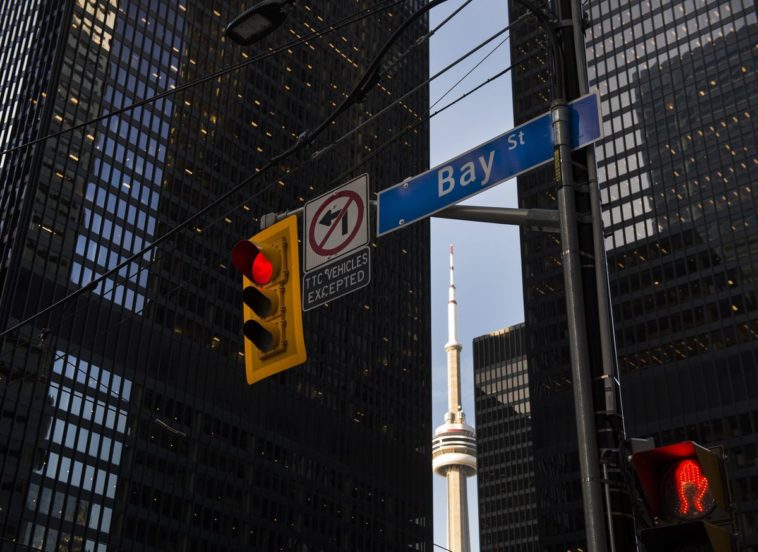Five steps to sustainable fiscal management for Canada
/cloudfront-us-east-1.images.arcpublishing.com/tgam/QYU2BDHLSNPQZNMK3QG4E3O3AA.jpg)
As Canada emerged from the global financial crisis a decade ago, there was a vigorous debate. Some argued for fiscal consolidation to rebuild resiliency while others advocated for sustained stimulus to reduce excess capacity. We are replaying that debate today as the Canadian economy begins its recovery from the global pandemic. In a twist, it is now the government making the case for sustained stimulus and large deficits. It is never as simple as an either-or-choice – we can neither cut our way to growth, nor reflate ourselves to prosperity through open-ended deficit spending.
What is needed is a more nuanced, but clear and predictable, approach to sustainable fiscal management that can be summed up as: set, shift, stop, switch and start. When large-scale vaccinations ramp up and lockdowns fade out, sound fiscal management will be crucial to our success in increasing public and private investment, improving competitiveness and anchoring business and consumer confidence.
Set: We need to set a clear and credible fiscal anchor to earn the trust of rating agencies and impose fiscal discipline within government. Simply put, a fiscal anchor is not something that can wait for sunnier days, and its current absence is a flashing red light to international investors who do not have to hold Canadian dollar assets in their global portfolios. Prior to the pandemic, a low and decreasing debt-to-GDP ratio reassured markets, but no longer. With federal debt rising a whopping 75 per cent between last year and next year, according to the Fall Economic Statement 2020, and the statement’s ambiguity about the scale of future deficits the government is willing to run, fiscal limits are needed to force governments to make tough but necessary spending and revenue choices.
At the same time, the government needs to set out a credible path from these immediate limits to fiscal sustainability that incorporates resiliency for the inevitable future shocks. The low federal debt-to-GDP ratio going into both the global financial crisis and today’s pandemic-induced recession provided the fiscal capacity and credibility to act decisively. We have to restore fiscal resiliency over the next five-plus years – just as previous governments did – in the national interest. This will require politically difficult choices, including possible spending cuts and tax increases.
A recent OECD outlook for Canada said, “There is headroom in the goods and services tax should additional revenues be needed.” According to the C.D. Howe Institute’s Fiscal and Tax Working Group, reversing the two percentage points cut from the GST by the Harper government, combined with a 40-per-cent increase in the GST tax credit, would raise nearly $15-billion annually – a sizable contribution toward fiscal sustainability and resiliency.
Shift: We need a debt-management strategy that significantly shifts the mix of federal borrowing from shorter term maturities to longer term bonds to lock in today’s ultralow interest rates. The argument that the massive increase in debt this year is affordable because interest rates are so low should also support shifting as much of the new debt as possible to very long-term bonds. This mitigates rollover risk when interest rates inevitably rise as economic growth recovers – something households with mortgages know well.
Stop: We need to stop the extraordinary levels of spending on the temporary emergency support programs as the economy recovers and unemployment declines over the course of 2021. From the outset of the pandemic, households and businesses urgently needed three things from government: liquidity, liquidity and more liquidity. And the federal government, to its considerable credit, delivered emergency support massively. But temporary support programs have to be just that – temporary. Canada’s fiscal credibility and sustainability depend on it.
Switch: We need to switch more of government expenditure toward “investment spending” to rebuild Canada’s long-term growth potential. Stronger economic growth is the best way to manage the mountain of debt we are accumulating. But getting back to our prepandemic growth levels will not be good enough to get us out of the fiscal hole as we have a productivity problem holding back our growth potential. Public investments in physical and digital infrastructure, in education and in innovation all raise productivity and growth. So, too, do investments to increase labour force growth through higher immigration and greater female participation in the work force. The challenge for fiscal management is doing less of something to do more investing.
Start: We need to start tackling Canada’s other deficit, the one that few are talking about: the current account deficit. Our declining competitiveness in recent years, exacerbated by weakness in energy and other commodity prices, has meant a substantial and persistent current account deficit and rising international indebtedness. We have to get more firms taking advantage of our trade agreements with Europe, with the United States and Mexico, and with the Trans Pacific Partnership countries. We have to not just rebuild but expand our tourism and education trade sectors postpandemic. And we have to become players in digital trade, not just importers of others’ content. Canada is a trading country but not a country of traders, and that has to change to reverse the decline in our long-term growth and prosperity.
It will be a long and winding road to fiscal sustainability in the aftermath of this dreadful pandemic. The key is political will and public support – putting short-term politics aside for long-term public gain as Brian Mulroney and Michael Wilson did with the GST, as Jean Chrétien and Paul Martin did during the fiscal crisis of the mid-1990s, and as Stephen Harper and Jim Flaherty did during the global financial crisis.
Last week, Prime Minister Justin Trudeau called for a fiscal anchor in his updated mandate letter to the Minister of Finance. Let’s hope he and Chrystia Freeland follow this approach of sustainable fiscal management and avoid the short-termism that passes the buck – and the risks of a massive debt hangover – to the next generation. And all political parties should support it.
Kevin Lynch is former deputy minister of finance and former clerk of the Privy Council.
Paul Deegan is CEO of Deegan Public Strategies and former deputy executive director of the National Economic Council in the Clinton White House.
Your time is valuable. Have the Top Business Headlines newsletter conveniently delivered to your inbox in the morning or evening. Sign up today.
Published at Fri, 29 Jan 2021 01:26:14 +0000





Comments
Loading…